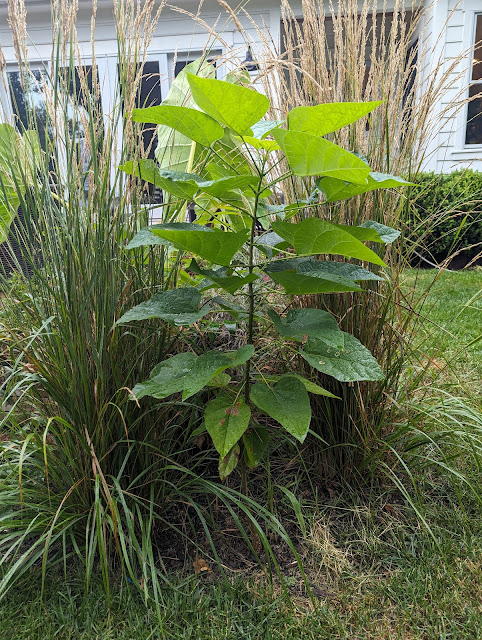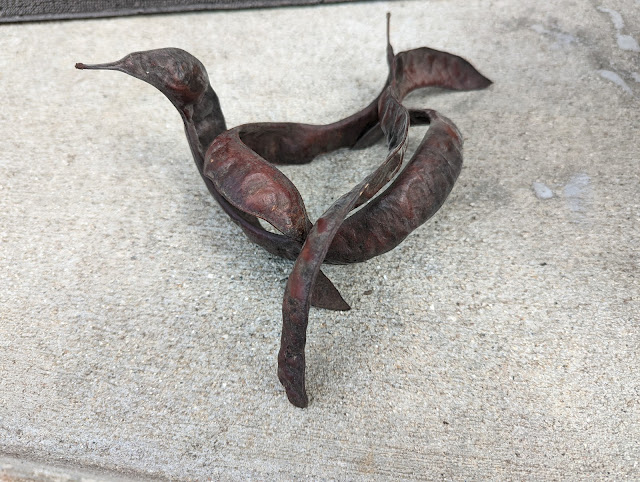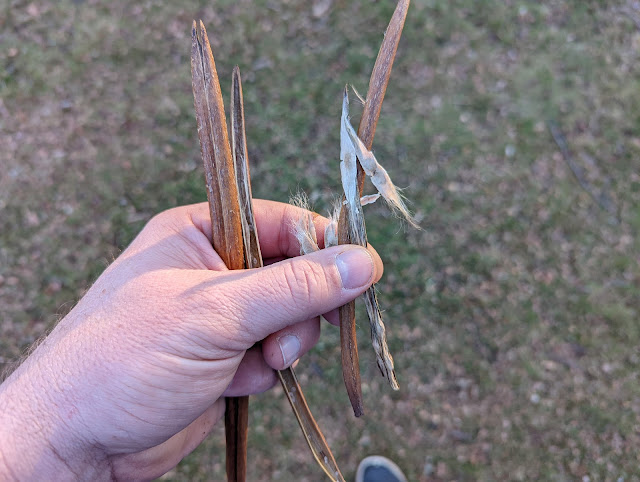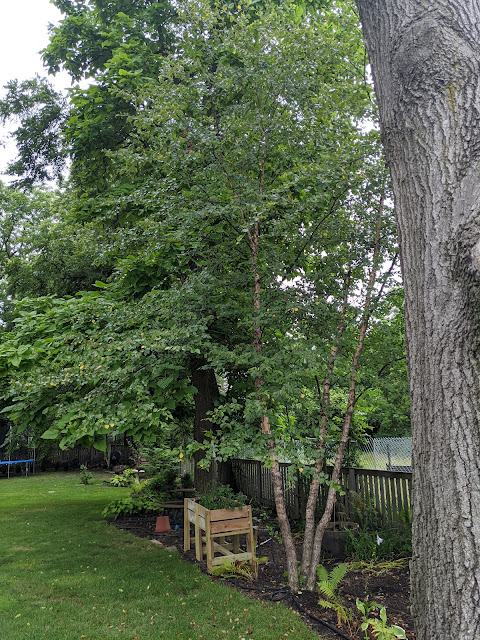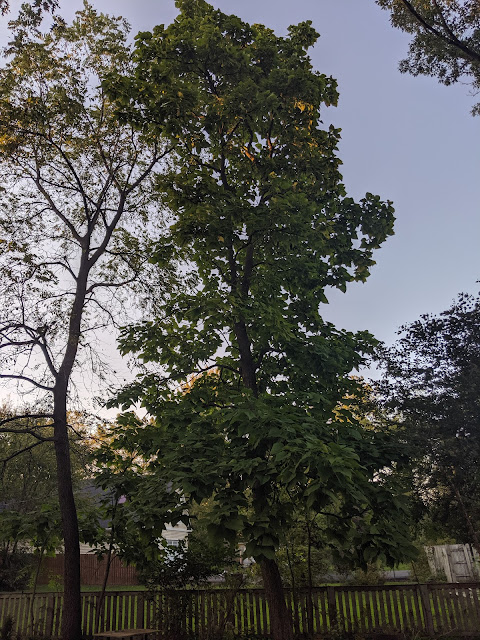Northern Catalpa in Blooms - White Flowers on Native Tree - July 2025

A few weeks back (this post is going live on July 1st, but these photos are from mid/late June), a stretch of our backyard was covered in white flowers. On the lawn. On top of shrubs. On our little, hidden picnic table. A carpet of white flower heads. It looks like this: That means it is Northern Catalpa season. We have two mature Catalpa trees - native trees. (We have a small one growing near our patio, but it is still a twig.). They both bloomed this year in a prolific manner. In mid-to-late June these trees put on a show. The flowers stay on the trees for a while, then fall. The week the trees were in bloom, we experienced a couple of days of heavy rain. I'm thinking that caused the blooms to fall-off faster than normal. I posted about these flowers in a similar way in June of 2023 . In that post, I also included a shot of the tree. Here's the current state of this large Catalpa tree in our yard: In looking...

